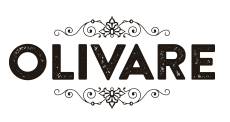
Understanding the Nuances of Security and Licensing
In an age where digital assets are among the most valuable resources a company possesses, the significance of Security and Licensing click here to further understand security and licensing cannot be overstated. Organizations must navigate a complex landscape of legal, technical, and operational considerations to protect their intellectual property while ensuring compliance with relevant licensing agreements. This article aims to elucidate the intricacies of security and licensing, highlighting their importance, best practices, and contemporary challenges.
The Importance of Security in Licensing
Security is the backbone of licensing agreements, serving to protect the interests of both the licensor and the licensee. A robust security framework ensures that licensed software operates as intended without unauthorized access or misuse. Without adequate security measures, licenses can become vulnerable to breaches, resulting in significant financial and reputational damage.
Legal Frameworks Governing Security and Licensing
Understanding the legal frameworks surrounding security and licensing is crucial for any organization. Different jurisdictions have various laws governing intellectual property rights, data protection, and software licensing. Familiarity with these regulations helps organizations enforce their rights and avoid legal pitfalls. Key legal frameworks include copyright laws, End User License Agreements (EULAs), and open-source licenses, each designed to address specific needs while providing varying levels of user access and modification rights.
Types of Licensing Models

The licensing landscape features a variety of models that cater to different business needs. Some common licensing models include:
- Perpetual Licensing: Allows the buyer to own the software indefinitely, often involving a one-time payment.
- Subscription Licensing: Provides access to the software for a specified period, typically requiring regular payments.
- Freemium Licensing: Offers a basic version for free while charging for advanced features.
- Open Source Licensing: Lets users access, modify, and redistribute the software under certain conditions.
Best Practices for Security and Licensing
To effectively manage security and licensing, organizations should adopt several best practices, including:
- Regular Audits: Conduct regular audits of software licenses to ensure compliance and identify any discrepancies that need addressing.
- User Education: Engage in training programs to educate users about licensing terms, security protocols, and the importance of adhering to these guidelines.
- Implement Security Controls: Utilize robust security controls, such as encryption and access management, to protect licensed software from unauthorized use.
- Monitor Usage: Use software asset management tools to monitor usage and ensure that licensing agreements are followed accurately.
Challenges in Managing Security and Licensing

Despite the outlined best practices, organizations often face challenges in managing security and licensing. Some of these challenges include:
- Complexity of Legal Agreements: The language in licensing agreements can be convoluted and difficult to understand, leading to unintentional violations.
- Rapidly Evolving Technologies: Technological advancements can outpace existing security measures, creating new vulnerabilities.
- Globalization: Operating in multiple jurisdictions means that organizations must navigate varied legal landscapes, complicating compliance efforts.
- Resource Constraints: Smaller organizations may lack the resources needed to implement comprehensive security and licensing management strategies.
Future Trends in Security and Licensing
The landscape of security and licensing is continuously evolving. Some potential trends that organizations should watch for include:
- Artificial Intelligence: AI is increasingly being used to automate aspects of security monitoring and compliance management, reducing manual effort and improving accuracy.
- Blockchain Technology: The utilization of blockchain for licensing could provide more secure and transparent tracking of software usage and compliance.
- Decentralization: The move towards decentralized applications may affect traditional licensing models, prompting a reevaluation of security measures.
- Enhanced Regulatory Scrutiny: As data protection laws become more stringent globally, organizations will need to adapt their compliance strategies accordingly.
Conclusion
In conclusion, the realms of security and licensing are interdependent and critical to the protection of digital assets. Organizations that prioritize security in their licensing practices are better positioned to mitigate risks and ensure compliance with legal frameworks. By staying informed of the best practices, challenges, and future trends, businesses can effectively navigate this complex landscape, safeguarding their interests and fostering trust with their users.
